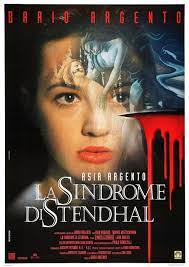In Florence, Italy, Anna Manni (Asia Argento) enters the “Galleria Degli Uffizi”. Anna is a police detective who has gotten a tip that a serial rapist, and now murderer, will be at the museum. While she is wandering around the museum, Anna becomes overwhelmed by the artwork. She suffers from an episode of Stendhal Syndrome and passes out. Anna eventually wanders out of the museum confused and suffering from a temporary loss of memory. She is assisted by a man who returns her purse to her.
A key in her purse tells her that she is staying at the Porta Rossa Hotel. While still in her fugue state the man who helped her shows up and violently rapes her to unconsciousness. He then kidnaps her. When she regains her senses, she is in a car and the man is raping another woman. When the woman bites him, he shoots her. Anna escapes his clutches. She then learns that she was raped by the serial killer she was hunting, Alfredo Grossi (Thomas Kretschmann).
Still traumatized, Anna returns to her childhood home in Viterbo. Alfredo follows her. Once again, he kidnaps her, rapes her and tortures her. Anna manages to free herself and attacks Alfredo. She wounds him, shoots him and tosses him over a small cliff and into a raging river. Everyone believes that Alfredo is dead, but since they haven’t been able to find his body, Anna is not sure.
Anna meets a young French art student, Marie (Julian Lambrosschini). They fall in love. When Anna begins to get mysterious phone calls, she is certain that Alfredo is alive and is stalking her and Marie.
“The Stendhal Syndrome” AKA “La Sindrome di Stendhal” was released in 1996 and was written and directed by Dario Argento. It is an Italian thriller and a giallo. The movie features Argento’s daughter Asia Argento as the main character Anna Manni.
The first half of the movie is violent and intense, especially when you know that the female lead, and central object of sexual violence, is Argento's real-life daughter. I had to actually stop the movie and take a break before I could finish it. The second half is more psychological and visual but there is still violence and blood. Just not as much. The Stendhal references in the movie do much to add atmosphere. They don’t have anything to do with the serial sexual killer but with Anna’s psychological makeup and how she reacts to the violence heaped on her. It is an interesting film, but you need to be prepared for the extreme violence.
I wasn’t thrilled with Asia Argento being cast as Anna. Her acting ability isn’t the best. Besides that, she seemed a little young for the part she was playing. I felt that someone older should have been cast as a police detective. She was believable as a victim, but not as a detective.
This was the first Italian film to feature CGI. Reportedly Ennio Morricone’s music score is exactly the same played forward and backward.
Stendhal syndrome, also known as Florence syndrome, is a psychosomatic condition. The symptoms of the disorder are rapid heartbeat, fainting, confusion and often hallucinations. The condition occurs when susceptible people become exposed to great artworks of beauty and/or antiquity. The condition is named after the 19th-century French author Stendhal. The name Stendhal is actually a pseudonym of Marie-Henri Beyle.


